Hypersonic missiles are being developed and deployed by several countries, including China, Russia, and the US. They combine speeds of over five times the speed of sound (Mach 5) with significant manoeuvrability during flight, making them a cutting-edge advancement in military technology. These missiles are expensive and technically demanding to develop, and their uses and effectiveness are still being assessed. They present potential challenges for existing missile defence systems due to their speed, manoeuvrability, and altitude, which could decrease the time available for interception.
Types of Hypersonic Missiles
There are two main types of hypersonic missiles:
Hypersonic Glide Vehicles (HGVs)
- Mounted on rocket boosters similar to intercontinental ballistic missiles (ICBMs).
- Accelerated to speeds of Mach 20 or more.
- Glide unpowered in the upper atmosphere (30-80 km altitude) before diving towards the target.
- Highly manoeuvrable, making them difficult to intercept.
Hypersonic Cruise Missiles (HCMs)
- Fly at lower altitudes (20-40 km) and are powered throughout their flight.
- Typically use ramjet or scramjet engines to achieve hypersonic speeds.
- Require initial acceleration from a rocket booster or jet engine to reach operational speeds (around Mach 3 or above).
- Can reach speeds up to Mach 10 or more.
Current Development and Deployment
- China and Russia: Both have reportedly deployed hypersonic missiles capable of delivering conventional or nuclear warheads. China’s DF-17 and Russia’s Avangard are notable examples.
- United States: The US is actively testing and developing multiple hypersonic technologies, including the Common Hypersonic Glide Body and the Hypersonic Attack Cruise Missile.
- AUKUS Agreement: The UK, US, and Australia are collaborating on developing hypersonic and counter-hypersonic technologies under this security partnership.
Technical Challenges
Developing hypersonic missiles involves overcoming significant research and development hurdles:
- Heat-Resistant Materials: Hypersonic speeds generate extreme temperatures, necessitating advanced materials like ceramics to withstand the heat.
- Aerodynamic Design: Optimising the missile’s shape to minimise air resistance and manage heat.
- Scramjet Engines: Ensuring efficient air and fuel mixing in a highly turbulent environment, akin to “keeping a match lit in a hurricane.”
- Plasma Formation: High-speed travel can create a plasma cloud around the missile, interfering with communication and guidance systems.
- Testing: Real-world flight tests are expensive and require extensive infrastructure.
Implications for Military Operations
Hypersonic missiles could be used for:
- Rapid Strikes: Targeting high-value, time-sensitive assets with minimal warning.
- Long-Range Precision Strikes: Attacking well-defended targets from a safe distance.
- Enhancing Nuclear Deterrents: Strengthening the ability to bypass missile defences, though this remains a subject of debate.
Challenges for Missile Defence
Hypersonic missiles pose significant challenges for current missile defence systems:
- Late Detection: Their low-altitude flight and high speed reduce detection times.
- Manoeuvrability: Makes interception difficult, requiring more agile and advanced interceptors.
- Reduced Engagement Time: Less time for defence systems to respond due to their high speeds and unpredictable trajectories.
Global Stability and Arms Control
The development and deployment of hypersonic missiles could have implications for global stability:
- Increased Risk of Conflict: Difficulty in predicting targets and distinguishing between conventional and nuclear warheads could lead to escalation.
- Strategic Balance: Some analysts believe hypersonic missiles may not significantly alter the strategic balance between nuclear powers.
Measures to Mitigate Risks
Potential measures to address the challenges posed by hypersonic missiles include:
- Arms Control Treaties: Amendments or new treaties to limit deployment.
- Export Controls: Restricting the transfer of hypersonic technology.
- Non-Treaty Mechanisms: Information exchanges and dialogues to minimise ambiguity and enhance stability.


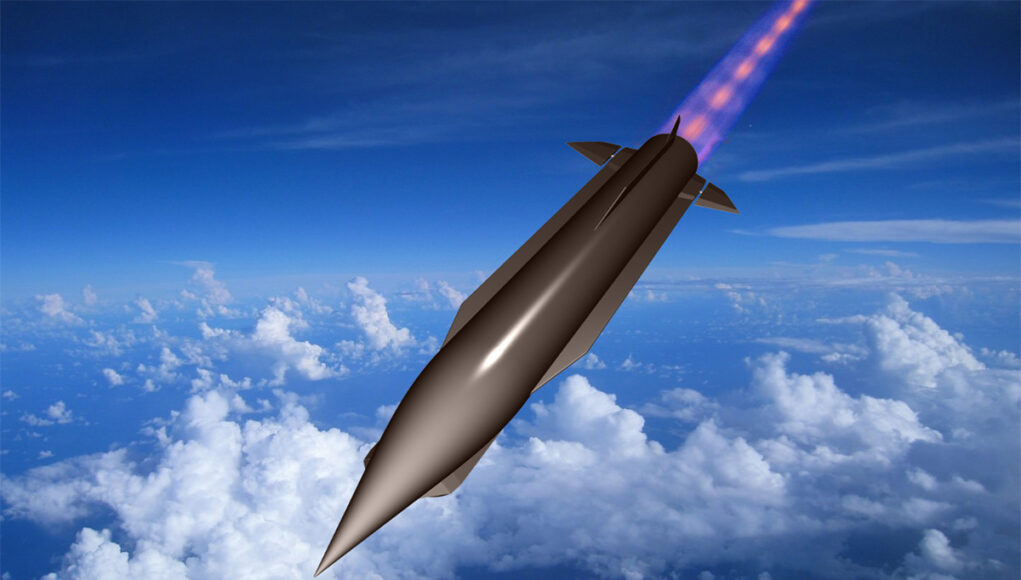
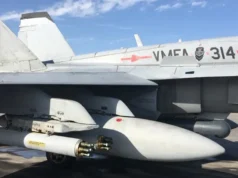

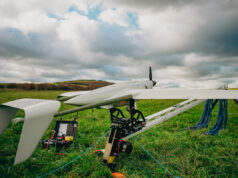
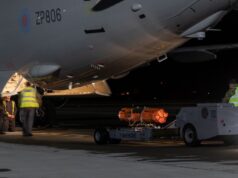
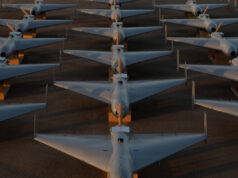
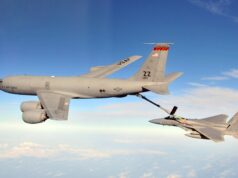
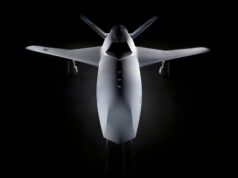

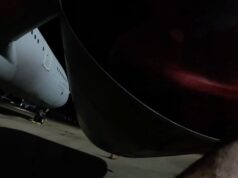
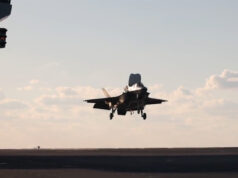

My comment is….they are a long way from bows and arrows and may God help us all..Mach 20!!
Classic, but you forgot the French hypersonic glider project…
Technically 2 projects, but only one in active development as far as we know with the V-MAX demonstrator for the nuclear forces.
The second is probably linked to the UK with the FC/ASW, so you’ve also forgotten the UK, but I agree that this project is not very clear.
The real challenge is guidance especially for “low altitude” ones.
Hmmme, well maybe…..for static targets…..quantum inertial navigation?
FC/ASW options are subsonic and supersonic.
Adding to Hermes’s comment. The UK’s MoD (DE&S) have signed a £1B contract (May 2024) to develop a sovereign capability for a hypersonic missile. There are 90 companies that are now “on-contract”. This is a separate program to FCASW, but may be linked to AUKUS.
There is next to no information on what type of weapon this will be. Though I would guess it’s a surface launched weapon rather than air launched, as you are less restricted by size. Where you can use a much bigger 1st stage booster to not only get it up to speed. But also to reach the necessary cruise altitude. Further air-launched places a lot of constraints on the design.
However, the US is developing the MAKO hypersonic cruise missile made by Lockheed Martin (LM). This is an air-launched weapon which the USN are paying for. It is designed to strike targets in anti-access/area denial locations that have multiple layers of air defences.
Interestingly LM have shown images and videos of this weapon being launched from F35A and Cs. Where two weapons are housed internally in the weapons bays, along with four externally. The weapon will be relatively small, which also means the range will fairly modest. LM has stated that it will be capable of Mach 5. But didn’t expand on that or describe the sensors it uses. This was the weapon that lost to Northrop Grumman, for the USAF’s stand in attack weapon (SISW).
From what I can gather, the prototype of MAKO has done a number of flights. Any other information on its success is very hard to find.
So there are two potential options. The first is a ground launched long range precision strike cruise missile. Used to take out strategic targets deep in an enemy’s country. The other is a smaller air launched cruise missile. That can be launched from Typhoon, F35B and Tempest. Which is designed to attack specific targets protected by significant air defences. The first option would be a direct replacement for Tomahawk (TLAM). As air defence networks get better, its capability diminishes. Whilst the second option blurs into the same targeting options you would use FCASW for. So I guess we hurry up and wait to see where this leads!
If you expect to wait in the queue for a decade to get LM to integrate your preferred missile to the F-35s, watching videos of a new missile made by LM being launched from the F-35 isn’t going to make you feel warm and fuzzy.
Davey,
Have no verified knowledge, but believe your supposition that the UK contract represents a negotiated UK contribution in support of the AUKUS Pillar Ii hypersonic/counter-hypersonic initiative, is essentially correct. 👍 £1Bn, spread across up to 90 separate organizations (commercial and academic), over a 7 year period, probably indicates a basic and applied research program supporting the collective initiative, as opposed to a development effort. UK would benefit from collective advancements in hypersonics, including the ability for UK industry to compete for industrial workshare of fielded systems. Reluctantly mention loaded reference, but UK similarly invested as a Tier 1 participant in F-35 program, and ended up w/ a 15% workshare. Everyone can optimistically hope that not every future tech program shares F-35 growing pains. 🤞
Actually quite curious how this initiative intersects w/ a possible FC/ASW program hypersonic weapon. May serve as the initial impetus for French involvement in AUKUS Pillar 2. (Absolutely believe virtually all NATO countries will inevitably petition for entry into AUKUS Pillar 2, eventually.) 🤔
Might as well look in to the Lockheed Mako missile project
No mention of cost, if the US Army and Navy Dark Eagle, LRHW/CPS HGV is an example totally unaffordable, to FY 24 they have funded $8.3 billion on R&D alone and as of yet to successfully flown one, the USAF ARRW AGM-183 HGV was cancelled, what is the operational justification to fund a few dozen of these of these horrendously expensive missiles.
e
Last I heard ARRW might not have been as cancelled as previously thought. Seems to be some confusion around its exact status having completed its trial fires with a stated successful test. Indeed though it came in for some criticism over ‘failures’ only one I believe was with the final stage of the missile itself.
One of the US hypersonic missiles I have read of is $15 million a shot. Another is $40 million a shot. Others are even more expensive. Perhaps vast numbers of cheap non hypersonic missiles to overwhelm defences, are a more cost effective solution?
The USAF –
“‘Cheap’ Long-Range Cruise Missile Designs To Be Tested By Air Force
$150K cruise missiles are a priority for the USAF, which could have many thousands of long-range targets to hit in a major conflict.” June 3 write up on Warzone
The old maxim “Quantity Has A Quality All Of Its Own” has once again come to the fore in the Ukraine with the tens of thousands of 155mm shells used. Hypersonics are a Gucci weapon system and can argue with UK very limited defence funding unaffordable.
PS The Pentagon in 2025 zeroed out procurement funding for the HGV AGM-183 ARRW, but included $517 million for the HCM SRAM HACM.
Since all new combat aircraft will rely on stealth to evade defences, logically a stealth missile should be expected to achieve at least the same. In fact, a missile should be even less detectable than an aircraft.
Ballistic missiles are incredibly difficult to intercept, certainly if launched in numbers. So a hypersonic glide weapon seems to offer little additional benefit but real difficulties in guidance systems that will have to deal with the plasma interference.
With so many shortfalls in our equipment, I don’t understand why the UK should devote large sums to a weapon we don’t need.
Risky to come to that conclusion at this stage. As I have stated before the U# are testing whether the plasma stream itself can be used as a stealth element while quantum guidance systems may be able to solve the guidance complexities. We can’t just presume that this technology is not required in my view, research will go a long way to determining it of course. It’s arguable that stealth in itself may not be so effective as time passes so a combination of stealth and speed may be vital come the thirties.
Part of the reason why China and Russia to a degree developed hypersonic glide vehicles, was that there was an exploitable gap in the US surface to air defences. Ostensibly the SM-3 and Ground Based Mid-course Defences (GMD) is designed to intercept an low earth orbiting missile and the re-entry vehicles. Then come the SM-6 and THAAD, these are designed to intercept t
A reason why China and Russia developed hypersonic glide vehicles, was that there was an exploitable gap in the US surface to air defences. Ostensibly the SM-3 and Ground Based Mid-course Defences (GMD) is designed to intercept a low earth orbiting missile and the re-entry vehicles. Then come the SM-6 and THAAD, these are designed to intercept the missile/re-entry vehicle as it re-enters the atmosphere. However, they had a ceiling limit of around 125,000ft.
This meant there was a window between what the exoatmospheric weapons and endoatmospheric weapons can intercept. China developed a weapon to exploit this. This was the DF-ZF hypersonic glide vehicle (HGV). It used the 1st stage booster of a medium range ballistic missile. Though can also be fitted to a multi-stage ICBM. It works by skipping off the upper atmosphere. Where the skips can help it maintain altitude. but it does slow the vehicle down. Which means that after a lengthy distance it will be well below Mach 10. China once stated that the DF-ZF could not be intercepted. Which was sort of true, until its altitude drops to below 125,000ft. Where it will come in range of SM-6 and THAAD.
Subsequently both SM-6 and THAAD are getting bigger boosters, with the aim of closing this exploitable window.
Recently SM-6, SM-3, THAAD and Patriot have all been used operationally to intercept ballistic missiles. They have yet to face the threat of the HGV. Will the HGV’s ability to manoeuvre throw of the missile’s interception. I have a feeling that it won’t make much difference to the interceptor.
How does this fit in with the UK’s requirement. Well I very much doubt that the MoD will opt for a HGV. As the atmospheric skipping causes the HGV to slow down, which makes it easier to track and intercept. But what we are seeing from Ukraine is that the much lauded S400, has severe difficulty in intercepting Storm Shadow/Scalp. Which by extension would mean a stealthier version in the form of FCASW will be even more successful.
But what a hypersonic cruise missile does give you, is the ability to react to a critical time on target requirement. A prime example would be a recently discovered HQ. Where the speed of the weapon gives less time for the target to exfil and escape.
If the UK does want to have a sovereign capability, then it is more likely to develop an air launched hypersonic cruise missile. As I feel this will have a greater impact than a ground launched very long range hypersonic cruise missile. This air launched missile will complement the FCASW. Which I feel will be similar to the Lockheed MAKO. When paired with the F35 or Tempest will have significantly better ability to penetrate an enemy’s air defences to reach its target.
But at the risk of having to have RAF in theatre as opposed to a long range ground or sea launch?
Whilst I can see why RAF might want the gig there are a lot of calls on a very few frames.
CBE
Its why I originally considered a two weapons options, a surface and an air launched variant. The surface launched variant would be a direct replacement for TLAM to complement the surface launched FCASW. Whilst the air launched is for more tactical targets, due to the need to carry it internally.
Do you think it might be an evolution of the Meteor which is only a tad slower at mach 4.5? With all these missiles, drones and precision munitions flying around, it’s making the battlefield a very brutal place. Hope the UK GBAD if and when it eventuates can handle these threats and isn’t mobile SHORAD/ VSHORAD needed more than ever now!?
In part you could very easily develop Meteor to be an air to surface weapon, much like HARM’s Stand-in Attack Weapon (SIAW). Where it could be used on targets of opportunity such a SRBM TELs. It would also make a cracking anti-radiation missile. As it has the speed to react and take out a painting radar, compared to the subsonic Spear-3. Which is better suited for planned targets.
Could you make Meteor hypersonic (Mach 5+)? A very good question, in part the answer is yes. However, it would need a few tweeks to make sure it can sustain these speeds. As the engine is sort of a ramjet, it would need more air to enter the combustion chamber. Therefore you would have to make the intakes bigger. However, there is an issue in that the engine is a hybrid rocket-ramjet. So being a ramjet, the air entering has to be slowed down to subsonic speeds. As the air entering the intakes slows down, its pressure and temperature rises. So there is a max speed limit, which is probably maxing out near Mach 6. The current airframe skin is pretty thin, so it wouldn’t cope too well with the sustained elevated temperatures from aerodynamic heating. The quickest way to solve this issue, is to coat it in an ablative coating.
As a ground attack weapon, the missile is limited in its capabilities by the small warhead, which I believe is about 10kg. The warhead is blast fragmentary, which would need to changing to something like Brimstone’s dual warhead, where it can be used against armoured vehicles. Which would also give a better punch against hardened targets like bunkers
Being throttleable, this allows Meteor to engage targets over 150km. But if was to go full throttle at a hypersonic speed, especially at lower altitudes. Its range would be about a 1/3 of its normal range. This is due to the stupendous amounts of fuel going that fast requires.
You could use Meteor’s engine to power a better missile though. To maximise the air being sucked into the engine and make the missile more aerodynamically cleaner. You could use a single air intake placed near the nose. This will allow to maximise the airflow into the engine.
If we are using the F35’s weapons bay as the limiting factor. Then the weapon can’t be any longer than 4.2m. But it doesn’t have to use a tubular airframe. At hypersonic speeds a flattened wedge style lifting body, will generate sufficient lift, so you would also only need relatively small tail fins for control. Being a wider shape, would allow more space for fuel and also a bigger warhead. You would still be limited to speeds up to Mach 6, due to using a ramjet. Plus range would be operating altitude. But I would expect between 150 to 200km. Which doesn’t sound much and may be a bit conservative. But it should be enough for a tactical missile with some stand-off range for the launching platform.
For more range you need more fuel and to operate/cruise at a much higher altitude. Where the air is thinner and causes less drag. Which means a much bigger airframe, so it will have to be either carried externally by a fighter sized aircraft (Typhoon, F35 or Tempest), unless we get access to a B52, B2 or B21.
Thanks again Davey. Absolutely awesome knowledge on tap. Brilliant stuff. A really good read as always. 🚀
HI Quentin, no problem. Though noticed I didn’t give a view on the UK’s ability to counter hypersonic weapons or the VSHORAD question. So get a brew ready!
In terms of VSHORAD/SHORAD, Starstreak has clearly demonstrated operationally its capability in Ukraine against, fixed wing aircraft, helicopters and drones. Also Martlet has shown it does very well when used against helicopters and drones. The SACLOS type target tracking won’t be able to cope with a ballistic threat with any degree of confidence. How does it detect the missile for starters? Plus Starstreak can only engage multiple targets in sequence. Though there is a lot of scope to improve this. Which is dependent on Thales further developing the laser tracking in to a fully automated system, that sort of borrows the process used for semi-active radar homing missiles.
There is the question of how we would deal with something like the Ka-52 launching ATGM from over 12km distances. Which is beyond what Starstreak is expected to intercept. Again this requires Thales to look at bridging the range gap. Perhaps using a new propellant or possibly replacing the 1st stage booster that gets the missile out of the tube, with a soft launch system. Where the 1st stage boost propellant volume is added to the main boost motor, thereby extending its range.
This also brings into question of how the operator, detects and selects the target from tracking. When using Starstreak as a MANPAD, it would be very unlikely for the operator to be able to detect the KA-52 using just visual and audio cues. If they have the Air Defence Alerting Device (ADAD), it may be of help, but the Ka-52 would be on the edge or possibly beyond its effective range. SACLOS being optically guided, would also be at the extremis of what it can track. The optics in the fire control unit are still very good. Though these would need improving if you want to engage a target over 10km away. Sadly there is a limit on how effective passive systems can be whilst keeping costs down. Though you could use LiDAR at these distances. Which would give the system a means of detecting and auto-tracking targets, even if its raining! By updating the method for searching and tracking, you will be able to expand the targets Starstreak is able to engage, possibly including ballistic threats. Importantly a vehcile mounted Starstreak will still be mobile and keep up with the movements of our forces. Where having an effective air defence system is crucial to their survival.
However, Starstreak/Martlet is overkill when used to intercept FPV drones. Apart from using electronic countermeasures to interrupt the control and video communications The most cost effective system has proven to be the German Gepard (SPAAG), that was considered to be obsolete in the early 1990’s. The UK does not have a SPAAG. But it may be getting something close. Ajax, is not a dirty word! The marriage of its sensors, networking and CTAS40, could be used as a pseudo SPAAG. But it really needs a very high frequency radar to search for and track these very small drones. As they wont give off much of an IR signature that can be detected at range.
The Army (RA) now have something significantly better than Rapier FSC. Which is LandCeptor based around the CAMM. It gives the Army a truly capable local defence system. Which can easily be expanded to area defence when including CAMM-ER and CAMM-MR. These two missiles are definitely coming, as the Army are looking for a mobile long range search radar to compliment or replace the current Giraffe, which has a too short a detection range for CAMM-MR.
As far as I’m aware, CAMM has yet to be trialled physically against a ballistic missile. It has all the ingredients, with LandCeptors CMS based on the one used by the Iron Dome system. I am pretty certain this anti-ballistic threat has been modelled by both the Navy and Army. As ballistic missiles are a known and now more frequent threat.
But could CAMM intercept a hypersonic cruise missile. Yes, definitely! But the CAMM has to be in the right place at the right time, as its window for interception is fairly small. With CAMM-ER and MR the interception window is widened, due to the additional range of the ER and MR versions. So for a threat coming straight towards the launcher, it is easier. However for a crossing threat, it becomes harder, as you have to get the CAMM to the predicted interception point. But it should be doable!
Evening Davey, it’s getting late here but I just read your post. Brilliant stuff. Thank you for a good read and on all the possible developments. I’m off to bed now, hope I’m not dreaming hypersonics missiles.. .lol 😁